Discover the best hardware experimental synthesizers of 2020 including large drone ambient machines, innovative polyrhythmic synths, and more.
Arturia, Behringer, Korg, Roland …, all companies that serve the Synthesizer mass market. The goal is to sell as much equipment as possible. These are mostly designed and engineered according to the same principle: relatively classic subtractive designs paired with a good price/performance factor. This made the market bigger than ever. A synthesizer is no longer an instrument for the elite, there is one for every budget.
However, this development strategy has one disadvantage: these devices are often not very innovative and are more of the same. Synthesizers like the Arturia MicroFreak or the Korg -logue series (NTS-1, minilogue xd…) showed that it is also possible to be very innovative in the mass market. Especially the multi-engine brings together classic educated and experimental musicians. Those who like to write their own codes, technology lovers… Such free synthesis approaches are particularly popular in the DIY / indie scene, less in the mass market, which is constantly under pressure from the sale numbers.
The great Synthesizer success is not only due to the mass market but also to the many small companies & one-man shows that try to enrich the communities with products that go behind the facade of classic synthesizers. Products you don’t expect from the big players because they are too unusual to convince enough people in the big market. Also, musicians are creatures of habit. Everything that does not have a keyboard, a well-known synthesis architecture, or produces unpopular sounds is often avoided.
You have to dare to step into new areas. No risk no fun. This would also be good for the big players, who often only develop the same thing with different optics. Synthesis recycling without taking a step in a new direction. For these reasons, I dedicate this Best Of article to small companies that are trying to escape from the “more of the same” swamp and offer us, musicians and sound manglers, new experimental Synthesizers that inspire us and bring synthesis further.
Best Experimental Synthesizers Releases 2020
The devices mentioned are my (SYNTH ANATOMY) personal favorite releases of 2020. The order of the synthesizers has no meaning and says nothing about which is better or worse. And of course, there were far more experimental releases this year. But since you have to limit the list somewhere, some devices have been dropped.
Moog Subharmonicon: Polyrhythmic Analog Synthesizer From the Other World
Experimental concepts only come from unknown manufacturers from the synth darknet. No, this year Moog has impressively shown its critics with the Subharmonicon that they are not just chasing after their vintage analog ghosts.
The Moog Subharmonicon is a beautiful, quirky, experimental Synthesizer that has mixed up the analog sphere. Instead of saturating the market with another classic semi-modular analog synth, Moog decided to take a different direction with wild sub-oscillators and polyrhythmic sequencing. The heart of the Subharmonicon is four mathematically derived sub-oscillators from the main two VCOs that are part of the musical, polyrhythmic network. It all about intervals, detuning, and interplay with the two 4-step sequencers which leads the sound generators into unfamiliar sound and harmonic worlds.
Subharmonicon is not an instrument for cool techno basslines etc. It is for those who like to plunge into a rhythmic and harmonic sound adventure. For everyone who wants to break out of the musical habits and open to discovering harmonics and scales that one would normally never have thought of.
More information here: Moog
The journey now takes us from Asheville (US) to France to Eowave
Eowave Quadrantid Swarm
Initially started as a Kickstarter project, the Eowave Quadrantid Swarm melts a multi-algorithm digital engine paired with a beefy, raw-sounding two-pole analog filter, LFO, and decent spring reverb in a unique synth. A patchable, eye-catching interface and touch keyboards round up the unique concept. The Quadrantid Swarm is not a typical bread and butter Synthesizer, it’s your source for extravagant sounds.
Very organic, raw, and almost tangible. The built-in analog filter and the feedback circuit give the digital multi-algorithmic oscillator a real dirty, crunchy character.
The Quadrantid Swarm is a great example that shows where the big players often fail. New ideas for instruments that simply risk something and don’t repeat themselves over and over again. It’s a lovely example that clearly shows why the market needs small companies.
More information here: Eowave
We continue to Russia to Elta Music who presented us with one of the best drone synthesizers this year. And yes, drone music is part of the music landscape like techno, pop, or rock.
Elta Music Solar 50 – The Big Ambient Machine
The Solar 50 is a big ambient drone machine from Arseny Tokarev (head of Elta Music) with incredible 50 analog oscillators (10 voices). It hosts an additional lush-sounding effect processor with which you can teleport every drone in a new dimension. These are playable with fully-assignable sci-fi-like touch plates that let play S50 very expressively.
Perfect for soundtracks, atmospheric sound walls, controllable drones, microtonal music, or as the developer says: super polyphonic electro symphonies. Visually and tonally, a masterpiece in my opinion.
More information here: Elta Music
Our world tour continues from Russia to China. This is the home of Meng Qi, an electronic sound artist, and developer. What MQ touches becomes different. The Wing Pinger is a synthesizer that was already shown at Superbooth 2019, but was finalized this year.
Meng Qi Wing Pinger: Rhythmic Self-Oscillating Filters
Winger Pinger is a truly unique Synthesizer that uses a pair of self-resonating 4-pole filters as oscillators surrounded by a network of peripheral logic circuits. This includes comparators, binary counters, shift registers, and more. They are pinged, which creates the sound. WP is also an experimental effect processor. With the inputs, audio signals can be used as pingers or filtered in a classic way.
WP sounds very organic and fragile. Reminds me a lot of the charm of physical modeling synthesizers. Here you travel quickly from clear pluck, percussions sounds, in noisescapes to complete chaos. Meng Qi designed here an instrument that challenges you with the game between control and pure chaos.
From a shiny, gentle glass sound to a huge, harsh resonating sound catastrophe are only a few knobs turns away. The fluid transitions between singing resonance and harsh noise are brilliantly implemented. Robin Rimbaud-Scanner shows this nicely in a sound demo.
Smooth glassy textures or pure chaos, Wing Pinger masters both sides and everything in between. Analog synthesis completely different and implemented only with the purity, beauty, and flexibility of analog filters. It’s definitely an instrument that takes you out of your comfort zone.
More information here: Meng Qi
We leave the glass, fragile sound landscapes of Menq Qi and focus on another highlight from the drone synthesizer area. The enthusiasm for Vlad Kreimer’s ground-breaking Lyra-8 instrument is so big that a user (Neutral Labs) has built an homage to it. The Elmyra, the little disgraceful sonic sister of the Lyra-8.
Neutral Labs Elmyra
Elmyra is not a 1-to-1 copy and does not want to be a clone of the Lyra-8. It is a standalone, open-source drone Synthesizer with a new digital/analog engine that is inspired by Vlad Kreimer’s mega synth. Elmyra produces sounds that are harmonic-rich, noisy, and harsh. It sounds like you send the immense Lyra-8 sound through bit-crushers and other crazy tools. The built-in analog distortion ensures that these sounds are also embedded with a load of warmth.
Elmyra is a great DIY project. For 179€ and some soldering skills, you become the owner of a very crazy, experimental drone generator. Certainly not an instrument for the next pop song but one that will certainly add another facet to your sound spectrum.
More information here: Neutral Labs
How special can a synthesizer sound? This was a big question during the release of the Gamechanger Audio Motor Synth. At the launch, the instrument was slaughtered by many because it doesn’t sound like a classic synthesizer. Well, this is a decision to make for yourself. However, I find it refreshingly new and very unique.
Gamechanger Audio Motor Synth
Motor Synth not only makes super weird sounds, but it also stands out, in my opinion, with its eye-catching, industrial black/red design. What distinguishes it from any synthesizer and sets it apart is its somewhat crazy analog electro-mechanical concept. It uses two simultaneous synthesis methods built around a system of electro motors (2 per voice). One side uses Magnetic pickups and the other optical sensors which produce a pitched signal.
Its unique concept but also its sound are the points that the instrument made it on this list. The sound in particular is unmistakable. Unusual, bizarre, it’s like sitting in front of a broken outer space control center. For others, the sound is reminiscent of a chainsaw. Above all, the background noises (when starting the engines …) give the instrument a special charm. One that only the Motor Synth can do and no other.
Gimmick Or Game-Changer
For me, strictly personal, it’s neither a game-changing Synthesizer nor a gimmick. It’s simply a beautiful experimental Synthesizer that enriches the saturated marked of classic synths. The character is so dominantly different, weird, and brutal that you can hear him out of 10 others with your eyes closed. I’m pretty sure. Motor Synth is a standalone tool kit for industrial, dystopian sound- and noisescapes. It’s very different and polarizes the communities. That’s good and that’s how it should be.
Let’s stay in Latvia where Erica Synths is at home. They are also known to go other ways in Synthesizer developments. The SYNTRX is the biggest coup so far by the Latvian company headed by the mastermind, Girts Ozolins. Unlike other synthesizers featured in this article, the concept is not brand new. It is a modern interpretation of a legendary, experimental Synthesizer, the EMS Synthi AKS
Erica Synths SYNTRX: A Legend Reinterpreted
SYNTRX is a new Synthesizer although the layout, features, and operation are almost identical to the original. However, the sound of the two instruments is very distinct. This is mainly due to the newly developed analog engine in collaboration with the Riga Technical University. 3 oscillators, a noise generator, resonant VCF, ring modulation, looping trapezoid envelopes, VCAs, S&H, and characterful spring reverb. New are also an S&H generator and a feedback circuit for the spring reverb with which the sound spectrum is further expanded.
Erica Synths has taken the popular concept of the pin-matrix into the modern area, digitized it, and made it recallable. Innovative, because they have given a pure, analog synth a digital modulation matrix that works without a display or menu diving. Less charm but more time-saving and convenient. With a simple turn on the knob, you can radically transform a sound into something new. And we all know how awesome that’s on such a hands-on monster synth.
Syntrx can do all the crazy, bizarre, and evolving analog sounds known from the beloved original. Yes, also the signature timbres from Jean-Michel Jarre, Pink Floyd… A dream synth for me. Erica Synths has successfully brought the legendary concept of the Synthi AKS into the modern world in the form of the Syntrx. Whether controlled chaos or played with a keyboard, it sounds powerful and big. For me, the joystick and the Mod Matrix are the points that let the instrument rise to the level of an experimental Synthesizer.
Herbs and Stones Liquid Foam: A TB-303 From Another World
Liquid Foam is one of the craziest groove box synthesizers out there at the moment. It’s like a TB-303 from a different sound dimension. It’s fully analog, patchable with banana-type cables, and one that invites you to creates basslines with endless variations. At the core, there’s a single, analog VCO with two stages of waveshaping, a decay-only EG that can be inverted any step, a 2-pole resonant low pass VCF, and a CMOS-based final overdrive stage.
The concept is brilliant and probably too crazy for many. It’s like Ciat Lombarde, the TB-303 inventor, and a happy accident machine sitting on a table and decide to build a Synthesizer.
The timbres depend on how deep you get into the adventure. The more you patch, the wilder the sound becomes. Classic analog to a wild mixture of organic, rhythmic bleeps and blops. Liquid foam can be simple but also experimental, sonically but also melodically. Both sequencers are capable of all sorts of inter-patching that let you go beyond classic 4/4 sequences. A source of inspiration for complex pattern generation.
More information here: Herbs and Stones
Vector 2.0
Vector is not a release from 2020 but already from 2019. However, I give it a place on this list. This is mainly because the synthesizer has evolved with the firmware 2.0 into a more rounded and finished device. A lot of time has been invested in making the engine sound better, making the features more mature, and adding missing ones. The development is not yet finished but close.
Vector’s core is all-digital and relies on a newly developed vector synthesis that combines multiple synthesis types. Instruments like the Sequential Circuits Prophet VS or the Wavestation have paved the way. Vector also uses A, B, C, D vectors that can be passed through but without a joystick. They have developed a warp/orbit method with which you can travel through the vectors free or on a pre-defined route like in space.
Vector sounds very special, difficult to compare with anything else. Like taking additive synthesis on an intergalactic journey. Nothing for the connaisseur of analog synthesis. Very digital, bright a bit harsh… Especially the in-between results that the morphing engine produces are rich and unusual. The device is fully in development so the sound spectrum will raise even further in 2021. I’m very curious.
More information here: Vector
The year 2020 was full of experimental synthesizers. Many of these instruments fly under the radar which is a shame. For this reason, I try to feature releases from unknown manufacturers with no marketing budget on Synth Anatomy as well. What is your highlight or did I even forget one? Let me know..


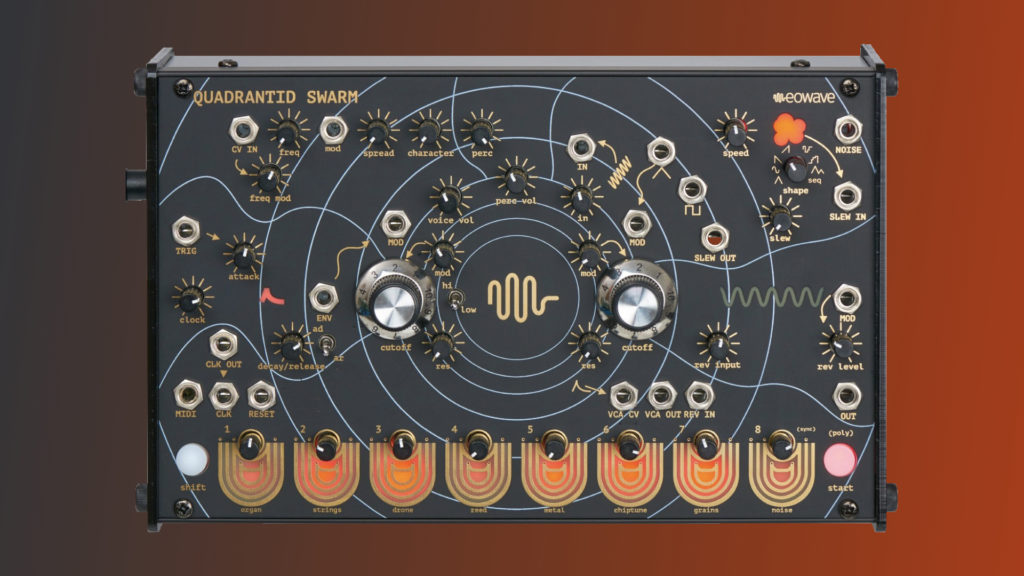

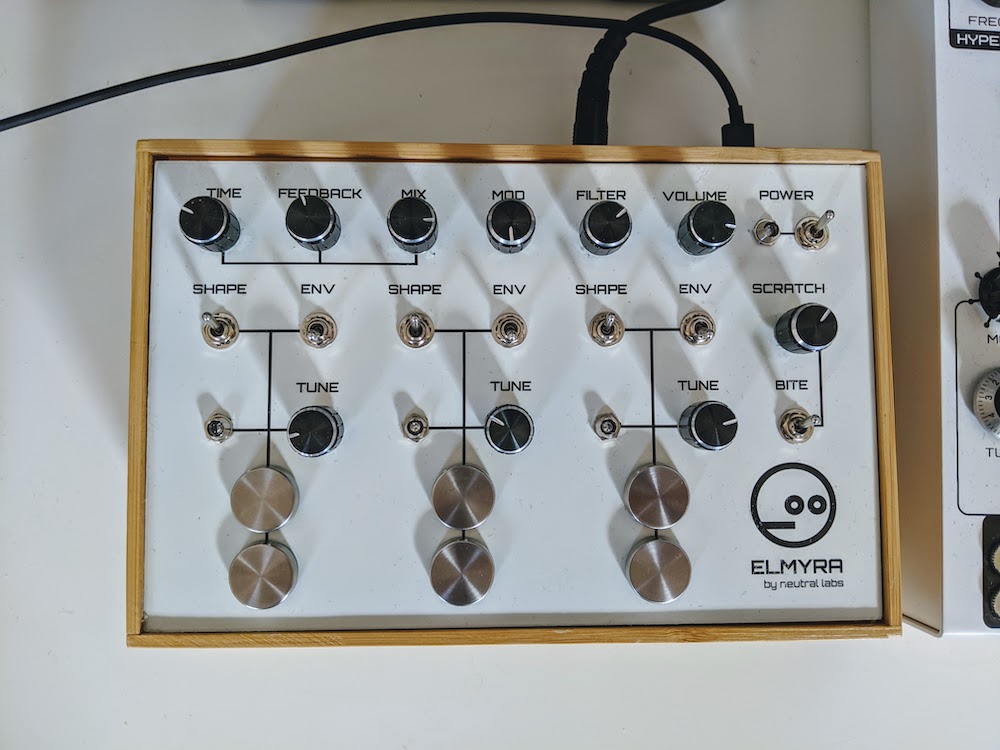

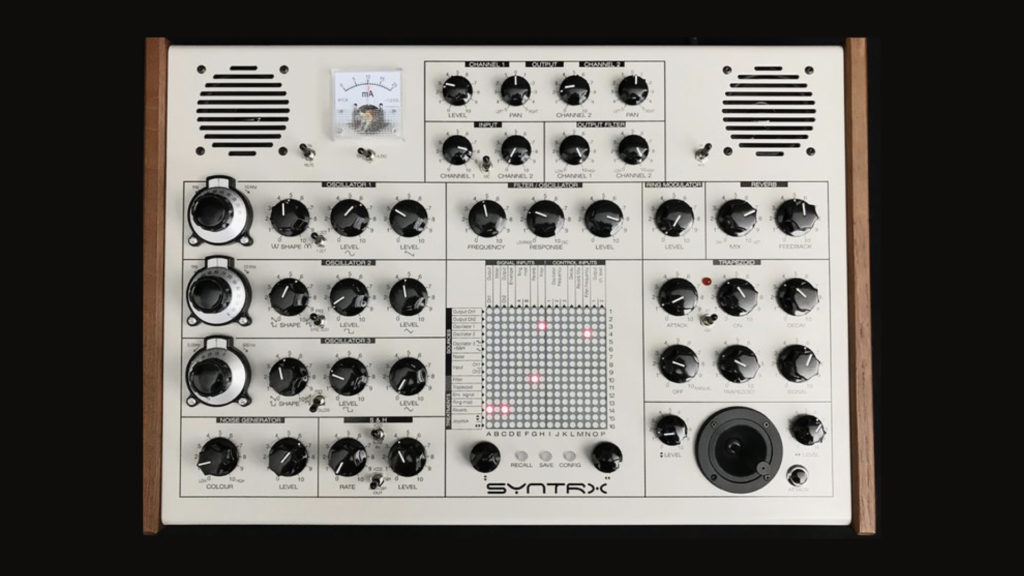

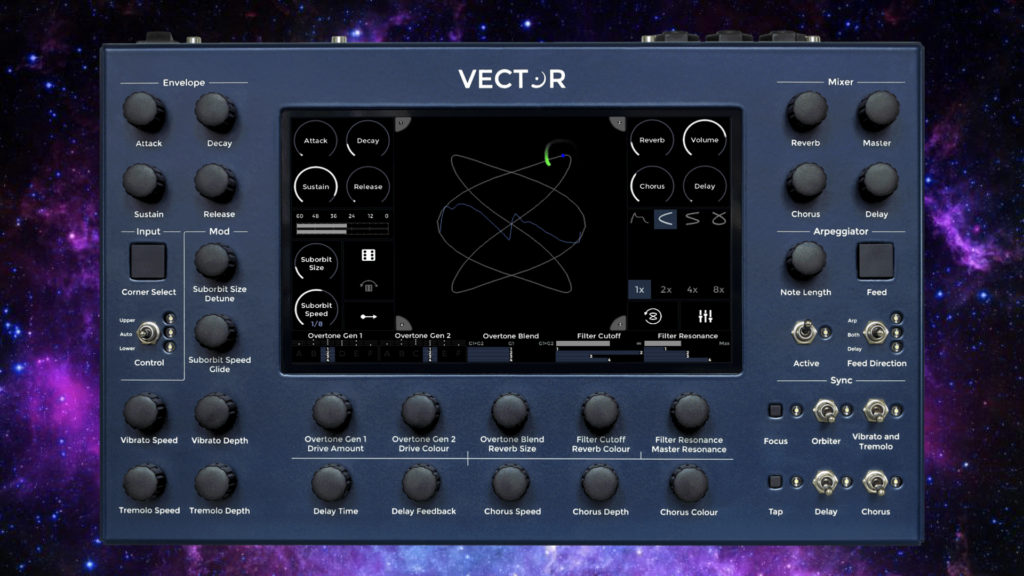
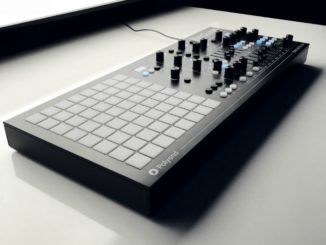
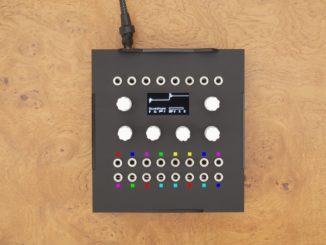
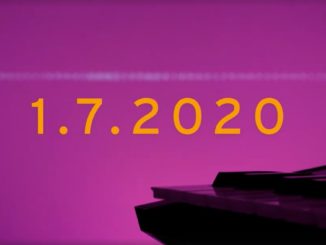
Hello and happy 2021! I just wanted to compliment you on this great article, I follow your site daily and watch many of your videos. What to say, finally an article about these wonderful machines, which are really the future of synthesizers, or if nothing else, a new direction.
I am planning to buy a Soma Lyra 8, but it is very expensive, however Elmyra seems to me a very good “clone” so to speak (and I can build it myself)
Thanks to your article I discovered experimental synths that I didn’t know (Wing Pinger is great!), Thanks again for your work!
recent addition to the experimental hardware synth territory: Bastl Kastle Drum. just received mine and have been having tons of fun exploring rhythmic percussive sounds.
Seeing the hype on the Quadrantid Swarm 2 1/2 years after it came out make me feel hip since I backed that dope synth back in the day. Even if it is late, glad to see the splash eoWave is making with it.
The Subharmonicon is another wonder. I really like it. It was my must have piece of gear this year along with the Typhon and 0-CTRL. Lots of great stuff this year and thanks for taking on the role of naming experimental synths. We need more of that…
Cheers mate!
Paul
BTW, on your first Swarm vid at about 6:10 is why ANYONE should be interested in a swarm (though I’d add in a little more Spring Reverb myself…)
16:10 oops missed the ‘1’…
Nice overview, Tom. Great idea to highlight to substream flow of synth making.
Happy New Year to you, your readers and all beloved ones!